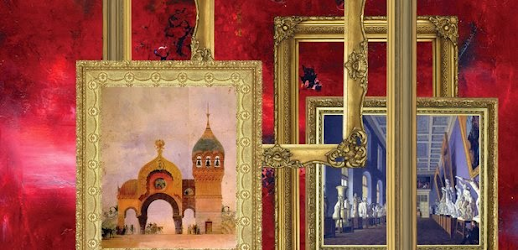The famous group of Russian nationalist musicians known as The Five, born in the 60s of the 19th century, had creators among its members who were not always exclusively dedicated to music, nor did they turn it into the profession with which they earned their livelihood. Borodin, an expert in aldehydes, never abandoned his profession as a chemist. Rimski-Korsakov was an officer in the Russian Navy, and César Cui was a military engineer. Balakirev combined music studies with engineering, and Mussorgsky, a military man when young, spent most of his life as a ministry official.
On the verge of oblivion
Now, if we make the exercise of bringing to mind the most relevant musicians of the famous group, Rimsky-Korsakov comes to mind, of course, and secondly, Modest Mussorgsky, although the latter was recognized in his time as an interesting author of songs and operas that will not stand the test of time, with the remarkable exception of his masterpiece in the genre, Boris Godunov. Precious hours will have been taken away from Mussorgsky's musical creation by his work as an obscure clerk, for had it not been for the orchestrations of his works made by colleagues after his death, we would perhaps remember him less than César Cui.
Without going any further, his most popular work, A Night on Bald Mountain, from 1867, was orchestrated by his friend Rimsky-Korsakov in 1886, five years after the author's death, gaining only then the popular favor (and it is even said to be an original work by Rimsky based on pages by Mussorgsky that did not reach completion).
The right guess of Ravel
And the case of the piano suite Pictures at an Exhibition, from 1874, is no different (its genesis and description, here). Also published five years after his death, although edited by Rimsky-Korsakov again, it had to wait until 1931 to be published keeping fidelity to the composer's manuscripts. And in spite of being Musorgsky's most finished piano composition and one of the most original creations of Russian romanticism, it only became known to the general public through the orchestral version that Maurice Ravel made of it in 1922. There were many previous attempts, but in the face of the fullness of Ravel's success, these have proved to be "unnecessary", in the opinion of scholars.
And the case of the piano suite Pictures at an Exhibition, from 1874, is no different (its genesis and description, here). Also published five years after his death, although edited by Rimsky-Korsakov again, it had to wait until 1931 to be published keeping fidelity to the composer's manuscripts. And in spite of being Musorgsky's most finished piano composition and one of the most original creations of Russian romanticism, it only became known to the general public through the orchestral version that Maurice Ravel made of it in 1922. There were many previous attempts, but in the face of the fullness of Ravel's success, these have proved to be "unnecessary", in the opinion of scholars.
Modest Mussorgsky did not enjoy a good life. Constantly afflicted by nervous depression and some episodes of epilepsy, he had to face sentimental loneliness, economic hardship, and, at times, the incomprehension of his work by his peers. At the age of forty, Musorgsky was a human being in sorrowful decadence, given in some degree to drink, but even in those conditions, he had the courage to abandon definitively his position as a civil servant and become a modest pianist accompanist in singing schools. From there, sometimes an event would arise, regrettably paid, to accompany at the piano some aspiring diva who was trying to gain an audience.
Posthumous celebrity
Mussorgsky died in a military hospital on March 28, 1881, without ever having known anything close to prestige, or fame. Forty years later, the most formidable orchestrator on record, Maurice Ravel, will provide it, copiously, to keep his name high to this day.
This is the RTVE Symphony Orchestra, conducted by Miguel Ángel Gómez Martínez.


No comments :
Post a Comment